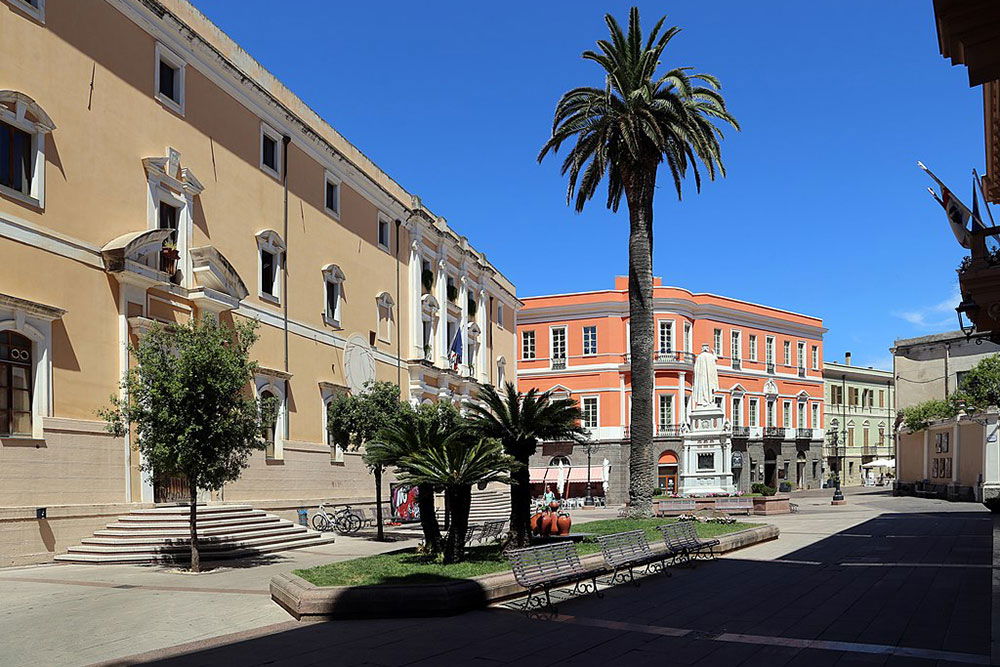
Set on the western plains of Sardinia, Oristano is a city that embodies the island’s rich medieval past, vibrant traditions, artistic spirit, and untamed coastal landscapes. Unlike Sardinia’s more tourist-heavy destinations, Oristano offers a genuine experience where history, culture, and nature are intertwined and waiting to be discovered.
Smaller and more intimate than Cagliari or Sassari, Oristano’s relaxed charm, impressive architecture, colorful festivals, and proximity to some of Sardinia’s most beautiful beaches make it a compelling destination for travelers seeking authenticity and depth.
Oristano’s story begins in the 11th century when it became the capital of the Giudicato of Arborea, one of the four independent Sardinian kingdoms during the Middle Ages. It was during this time that the city flourished, playing a crucial role in Sardinia’s resistance to outside domination, particularly under the leadership of Eleanor of Arborea.
Today, reminders of Oristano’s proud history are everywhere. Piazza Eleonora d'Arborea, the heart of the city, is graced by a striking statue of the legendary heroine, who was one of the earliest codifiers of written laws in Europe with her "Carta de Logu."
Wandering through the historic center, you’ll find beautiful architecture such as the Cathedral of Santa Maria Assunta, a mix of Gothic, Baroque, and Neoclassical styles that has evolved over centuries. The cathedral’s bell tower and intricate interior are highlights, reflecting Oristano’s medieval soul.
Another key landmark is the Torre di Mariano II, a robust medieval tower built in 1290 as part of the city's ancient defenses. Standing proudly at the city entrance, it serves as a powerful symbol of Oristano’s independence and strength.
Perhaps Oristano’s most famous event is La Sartiglia, one of the oldest and most spectacular equestrian festivals in Europe. Celebrated every year during Carnival (February or March), La Sartiglia is a thrilling medieval tournament where masked horsemen, dressed in ornate costumes, gallop through the city attempting to spear a suspended silver star with a sword.
Rooted in medieval chivalric traditions, the event is an exhilarating fusion of pageantry, horsemanship, and deep-rooted Sardinian ritual. The atmosphere in Oristano during Sartiglia is electric, with parades, music, and a palpable sense of community pride. It's a once-in-a-lifetime experience for visitors lucky enough to be there at the right time.
Oristano may be small, but it has a rich artistic and cultural scene.
The Antiquarium Arborense, located in the elegant Palazzo Parpaglia, is the city’s main museum. It hosts important archaeological finds from the surrounding area, including Nuragic artifacts and Roman relics from the ancient city of Tharros.
Speaking of Tharros, just a short drive from Oristano is one of Sardinia’s most fascinating archaeological sites. Perched on the Sinis Peninsula, Tharros was a Phoenician, then Roman, city founded in the 8th century BC. Today, visitors can walk among the atmospheric ruins of temples, houses, and streets, with the turquoise Mediterranean as a backdrop.
Another cultural gem is the Church of San Francesco, home to the famous Christ of Nicodemus, a rare and moving 14th-century wooden crucifix considered one of Sardinia’s most precious religious artworks.
Oristano’s location makes it ideal for exploring some of Sardinia’s most stunning natural landscapes, particularly along the wild and less-developed west coast.
The Sinis Peninsula, just a short journey west of the city, is a paradise of unspoiled beaches, crystal-clear waters, and extraordinary biodiversity. Notable beaches include:
Is Arutas: Famous for its unique quartz sand made up of tiny, colorful grains, giving it a shimmering effect.
Mari Ermi: Another quartz beach, quieter and just as beautiful, perfect for swimming and snorkeling.
San Giovanni di Sinis: A lovely beach near the ruins of Tharros, ideal for combining a cultural excursion with relaxation by the sea.
Nature lovers will also appreciate the nearby Stagno di Cabras, a vast lagoon teeming with flamingos, herons, and other birdlife. The surrounding area is also famous for its bottarga, cured mullet roe, a delicacy highly prized in Sardinian cuisine.
The food in Oristano reflects its agricultural and fishing heritage, offering simple, bold flavors made from high-quality local ingredients.
Key specialties include:
Fregola con arselle: A traditional Sardinian pasta made of toasted semolina pearls, often served with clams in a rich tomato and herb sauce.
Bottarga di muggine: Thinly sliced cured fish roe, served over pasta or simply with olive oil and lemon.
Pane Pintau: Beautifully decorated ceremonial bread, crafted especially for weddings and festivals.
Wine lovers should sample local varieties like Vernaccia di Oristano, an amber-colored fortified wine often compared to sherry, prized for its unique flavor and depth.
Oristano is a city where you can step into Sardinia’s medieval past, experience thrilling traditions like Sartiglia, savor rich flavors, and explore untouched coastal wonders, all in a relaxed, welcoming atmosphere.
For travelers seeking authenticity, culture, and nature away from the crowds, Oristano is a Sardinian gem waiting to be uncovered.

More Details



